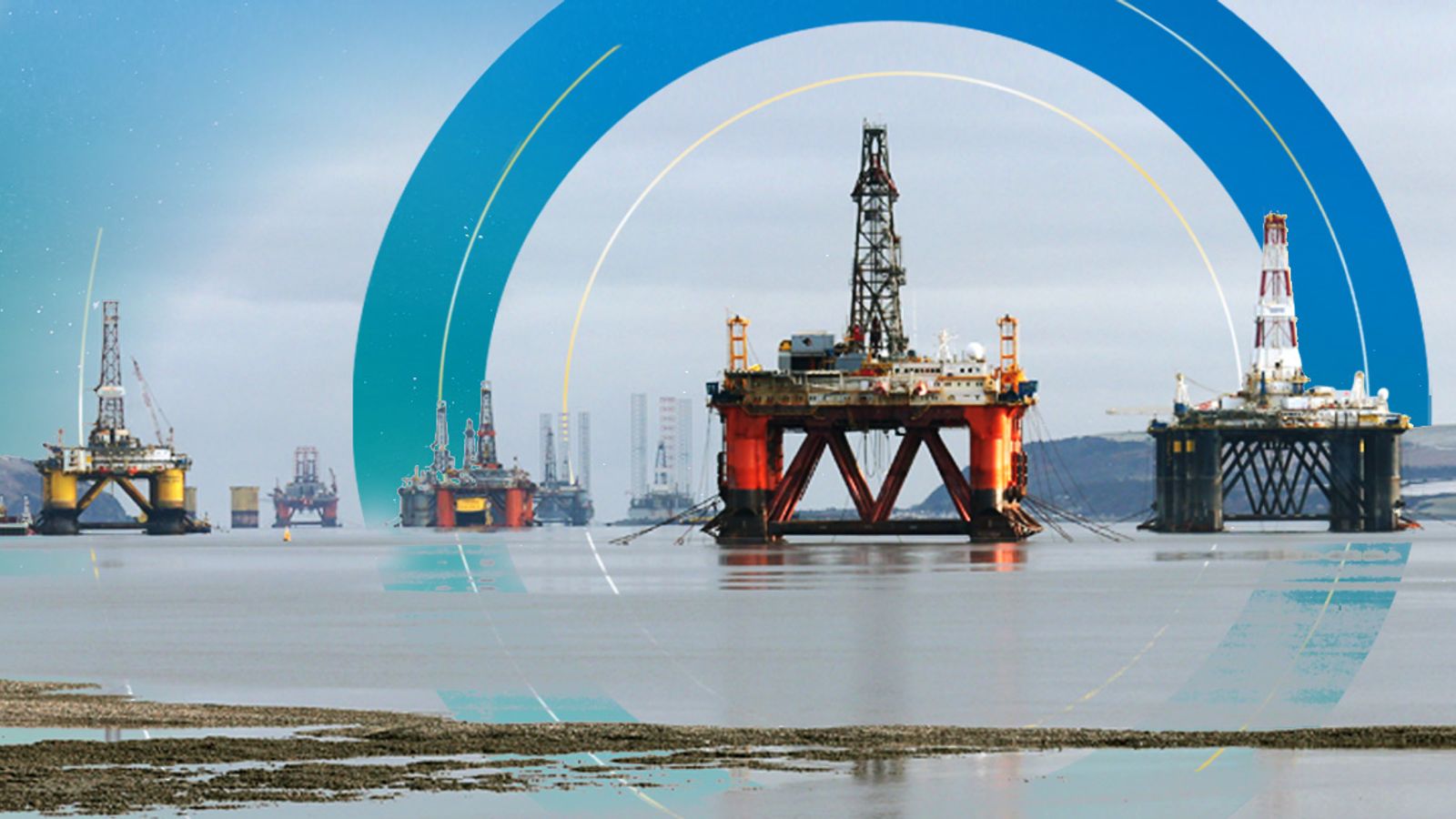Far out in the North Sea, midway between the Shetland Islands and Norway, is one of the most important oilfields in the world.
It might feel odd to think of an oilfield – in this case one covered by a stretch of grey sea – as iconic but Brent, which first began production back in 1976, is an exception.
It was here at Brent that many of the earliest advances in offshore oil and gas production – enormous platforms in the ocean, legs reaching 140 metres down – were made. The reason Britain’s oil price is called “Brent crude” is because this field, which has pumped out more than three billion barrels in its lifetime, was for a long time used as the benchmark for North Sea oil.
In other words, Brent is not just somewhere in the North Sea. For many in the business, it IS the North Sea.
Except not anymore. For the Brent oilfield is now dead. In March and April the last dribble of oil and gas was extracted from the last remaining platform.
It is worth pondering this watershed, which passed by so quietly no-one seems to have noticed, for a few reasons.
The North Sea is not dead; not in the slightest. Brent has been in decline for many years; indeed, you could make the case that it’s been in slow decline ever since its peak in 1982, when it was producing more than half a million barrels a day – enough to heat and power half of all homes.
Energy crisis: Igloo and two other firms join list of small suppliers on scrap heap as gas prices leap
Is the supply crisis short or long term? The Great Debate will examine what’s happening – and how long it might last
Petrol driver shortage: Situation ‘will get worse before it gets better’; police urge drivers to be ‘sensible’ at pumps; bust-up at busy petrol station
Other fields have picked up where it left off. The Culzean oilfield – now Britain’s biggest – pumps out a very respectable 100,000 barrels a day; up until the pandemic the North Sea as a whole was producing close to two million barrels a day.
These are not small numbers.
But they are considerably smaller than they once were. Britain went from being a net oil and gas exporter to being a net importer in the early 2000s.
Today we are reliant on imports for around half (actually just under half) of our oil and gas needs. For a long time, people have wondered what this decline would actually mean for our everyday lives. We seem to be finding out.
In recent weeks, wholesale gas prices have risen to record highs. That in turn has pushed electricity prices up to record highs. On the basis of futures, it looks as if we will have high prices throughout the winter. It is hard to calculate how consequential this will be for many of our lives, except to say: it will be consequential.
Please use Chrome browser for a more accessible video player
Bills are likely to be considerably higher. And given the winter hasn’t even begun and the weather has remained relatively warm for this time of the year, the impact is yet to be seen. But it is coming.
There are all sorts of reasons for high gas and electricity prices, which can be seen across most of Europe.
There is less gas coming in from Russia than before the pandemic. There is less coming from the North Sea than usual, thanks in part to post-COVID maintenance. There is enormous demand for liquefied natural gas from Asian countries, which have also been beset by a lack of coal. But above and beyond all that, the global economy is rebounding from COVID, pushing up demand for energy to almost unprecedented levels. Lots of demand; not quite enough supply.
Were Britain still pumping out enough oil and gas to provide all its needs, this wouldn’t necessarily shield it from this.
We live in a global market where prices are shaped by global factors. But it’s quite plausible that the price shock wouldn’t have been quite so high. As of Wednesday morning, electricity prices in the UK were around €220 per MWh. In Norway they were €88 per MWh. North Sea oil and gas is hardly the main, let alone the only reason for this disparity. Norway and its neighbours have enormous hydroelectric electricity generating capacity to fall back on.
All the same, the less oil and gas the UK produces, the more reliant it is on global supplies, and the more exposed to these kinds of episodes.
Which brings us back to Brent. All oilfields have a finite life. In the UK’s case, many of its fields are in decline. But there are more opportunities out there, especially to the west of Shetland.
If the UK didn’t exploit any of these known opportunities, then by the end of the decade the share of our gas we’d be importing from overseas would rise from 45% to 73%, according to projections from Oil and Gas UK – which represents the offshore industry. Exploiting those known opportunities wouldn’t eliminate the need for imports, but it would keep it roughly constant; so by 2030 just over half of our oil and gas would come from overseas.
Now, in an ideal world, we’d eliminate our demand for oil and gas overnight.
In an ideal world we’d no longer need to burn fossil fuels for heating or electricity, and use them only for making robust, recyclable plastics or critical chemicals. But we live in the real world, not the ideal world, so for the foreseeable future people will have gas boilers at home and the electricity grid will need fast, reliable backup for when the wind isn’t blowing and the sun isn’t shining.
Please use Chrome browser for a more accessible video player
For the foreseeable future even if we can reduce our demand for gas – and we are – it’s hard to imagine our lives, let alone that of heavy industry, without it altogether.
Which raises a question: is it better to produce that gas here in this country or to pump it in from overseas? There are a host of projects off the coast of Scotland, deeper into the waters of the North Sea and North Atlantic than Brent, which are waiting approval.
The government has paused; it is reluctant to do any such thing before the COP26 summit in Glasgow. But when the summit has passed most in the industry believe they will swiftly and quietly approve the projects. There will be outcry. Approving these kinds of projects is hardly fashionable these days.
But in the real world these decisions are far more nuanced and difficult than many make them out to be. Perhaps that’s why no-one knows how to feel about the demise of the Brent oilfield.
Its story is our story – powering our country through the 80s and 90s. But that was and is a story about reliance on fossil fuels. That story is not over yet.
Watch the Daily Climate Show at 6.30pm Monday to Friday on Sky News, the Sky News website and app, on YouTube and Twitter.
The show investigates how global warming is changing our landscape and highlights solutions to the crisis.






















